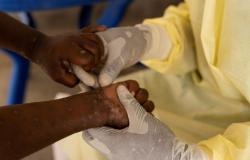Certainly, it has long been known that our immune system declines with age. But the mechanisms at the cellular level have never been clearly elucidated. However, identifying these mechanisms could help delay decline, in addition to improving the effectiveness of treatments against arthritis, or vaccines for seniors.
The “map” currently takes the form of a pre-published study, awaiting peer review.
Subscribe to our newsletter!
So you don’t miss any scientific news and know everything about our efforts to fight against fake news and disinformation!
To get there, researchers from immunology, genetics, rheumatology and pediatrics in four American institutions had to analyze RNA molecules, some of which encode proteins vital to our immunity, in more than 13 million immune cells. All from blood samples collected from around a hundred people, half aged between 25 and 35, and the other half, aged 55 to 65. Secondly, they compared these data with those from T cells (or T lymphocytes) in more than 230 people aged 40 to 90.
This interest in cellular mechanisms comes at a time when we are starting to hear about vaccines that will soon be used to fight certain cancers. However, write the researchers, the RNA molecules which show the most changes with age are those which are found inside T cells, these immune cells which target pathogens or cancers.






